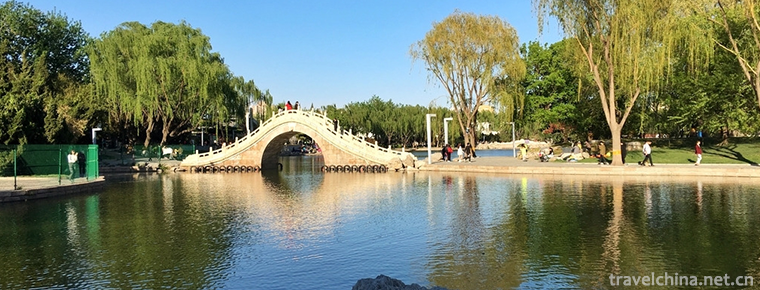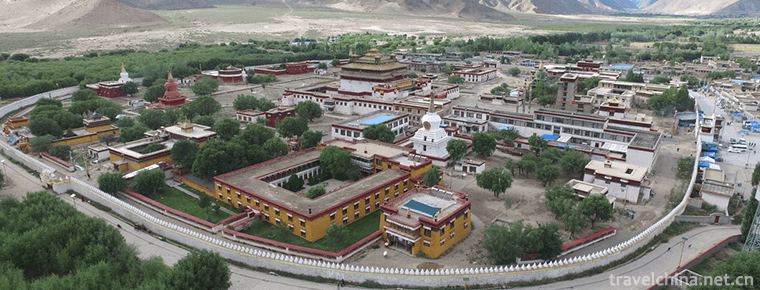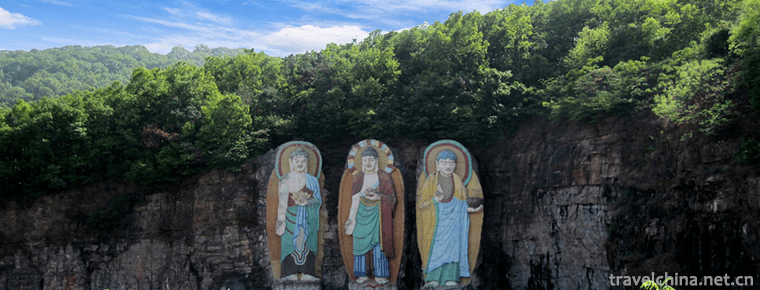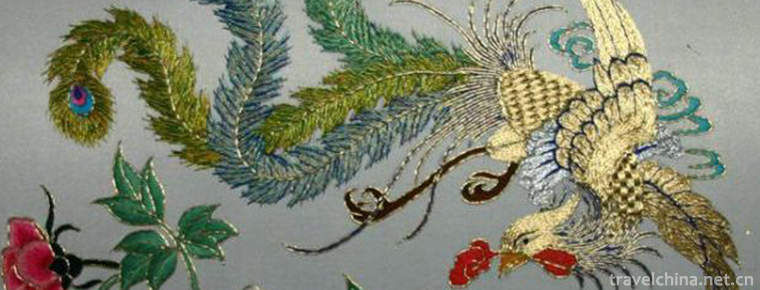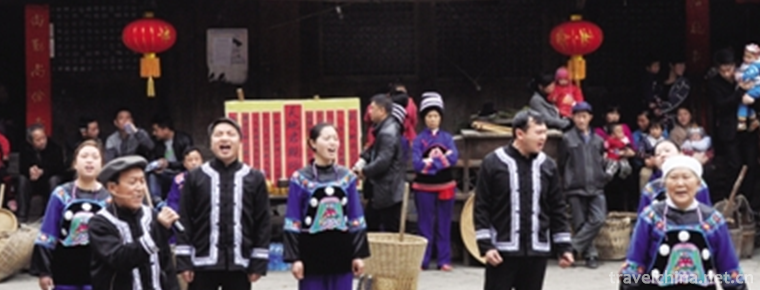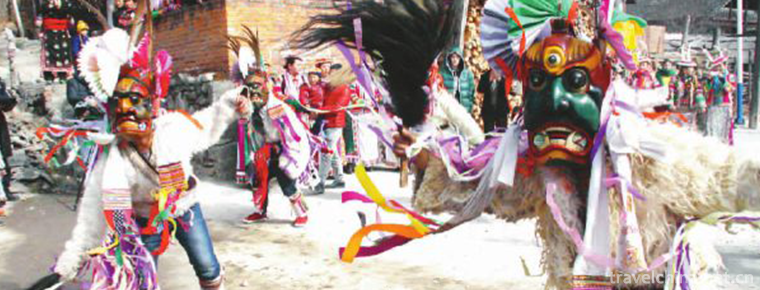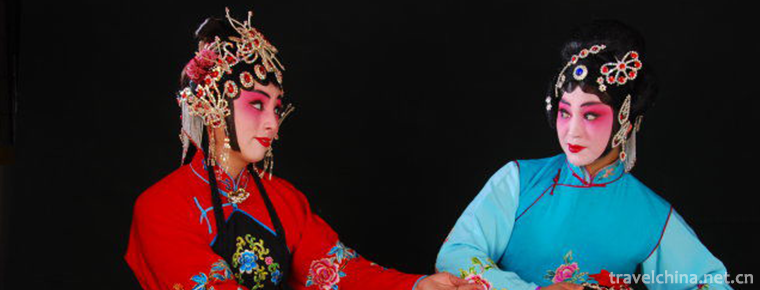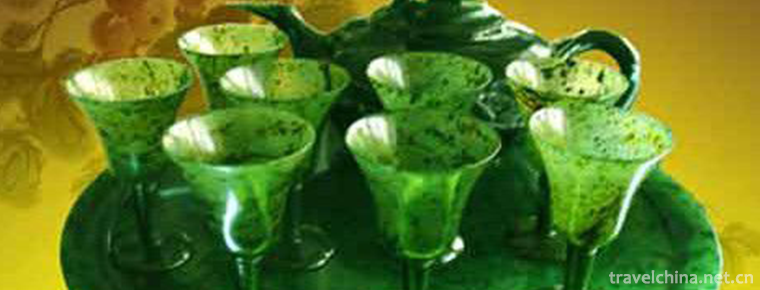Zhengzhou Yellow River Scenic Spot
Zhengzhou Yellow River Scenic Spot
The Yellow River Scenic Spot is located 20 kilometers northwest of Zhengzhou City, capital of Henan Province, on the Bank of the Yellow River. It is situated on Weiyueshan Mountain in the South and Taotao Yellow River in the north. It is a national scenic spot, AAAA tourist spot and National Water Conservancy Scenic spot.
Zhengzhou Yellow River National Geopark, with its magnificent river scenery and long history of Yellow River culture, is the starting point of "suspended river" on the Yellow River, the end point of the Loess Plateau, and the dividing line between the middle and lower reaches of the Yellow River. A series of unique geographical features have formed a broad, grand, magnificent and beautiful natural landscape. She is at the core of the birthplace of the Chinese nation, with rich historical sites and profound cultural heritage. After 40 years of development and construction, a large-scale scenic spot has been formed, which integrates sightseeing, leisure and vacation, popular science education, root-seeking and ancestor-worship, and promoting Chinese civilization. It has become a rare tourist attraction in China and a leading scenic spot of the "soul of the Chinese nation" - - the trip to the Yellow River.
The Yellow River Scenic Spot now has an open area of more than 20 square kilometers. It has built and opened five major scenic spots, namely Wulongfeng, Yueshan Temple, Dayushan Mountain, Yanhuang Erdi and Xinghai Lake. There are over 40 "giant statues of Yanhuang Erdi", "nurturing statues", "Dayu", Yellow River stele forest, Wanli Yellow River First Bridge, Chairman Mao's inspection of the Yellow River, Futian Pavilion, Jimu Pavilion and Peacock Garden. Scenic spots. Among them, the giant statue of Emperor Yanhuang was built by the combination of traditional Chinese sculpture art and Chinese architectural art. It is 106 meters high and is one of the highest sculptures in the world.
Following the successful completion of the ceremony in 2007, the Yellow River Scenic Area held the "China Zhengzhou Yanhuang Culture Week" for three consecutive years, which has generated strong repercussions at home and abroad. Many tourists at home and abroad come to visit the giant statue of Emperor Yanhuang. It has become a holy place for Chinese and international friends to seek their roots, worship their ancestors and travel. The scenic spot receives millions of Chinese and foreign tourists every year, and is known as a bright pearl on the Yellow River.
Traffic information
transit
You 16 Road Railway Station - Minggong Road Taikang Road Station - Dashiqiao - Nanyang Road Huanghe Road Station - Nanyang Road Agricultural Road Station - Nanyang Road Dongfeng Road Station - Nanyang Zhai - Jiangshan Road Wang Zhai - Laoyuchen - Jiangshan Road Downhill Yang - Jiangshan Road Dahe Road Station - Dapeng Village - Fengle Nongzhuang Fengle Kwai Garden - Huanghe River Daguan Road - South Bank - Huanghe River Scenic Spot.
No. 18 bus takes North Ring Road and Jiangshan Road. The route is 23 kilometers one way and the fare is 2 yuan. Passengers with A cards can take it, while other bus cards can not take it for the time being. The line has an early bus at 7 o'clock and a last bus at 19 o'clock. It runs every 15 minutes.
Self driving
Shangjiang Shangshan Road, Nanyang Road Interchange, North Rim, goes straight to the end.
Main attractions
More than 50 scenic spots including Wulongfeng, Yueshan Temple, Camel Ridge and Hanba Erwang City have been built and opened. Here, we can not only appreciate the vast river scenery and beautiful scenery, but also appreciate the historical origin of the Yellow River culture and overview the achievements of socialist modernization. The cultural charm of the Yellow River Scenic Spot lies in "climbing north and looking at the vast, vast and mighty land of Zhongzhou, and watching the Yellow River pass through the present and catch up with the past, which is the cradle of China in a restless and leisurely way".
The natural landscape and cultural landscape with the essence of Chinese history and culture and distinctive characteristics of the times are not only created a good tourist environment for tourists, but also a good place for people, especially young people to carry out socialist and patriotic education. Coming to the scenic spot of the Yellow River, there are exhibition rooms and classrooms everywhere, where you can enjoy the natural beauty and the edification of patriotism.
Yanhuang Erdi Stone Sculpture
The statue of Emperor Yanhuang is one of the most magnificent sculptures in China. It takes the mountain as its body, the whole Xiangyang Mountain 82 meters high as its body, and then shapes a head 18 meters high on the top of the mountain, totaling up to 100 meters. The idea is novel, original and extraordinary. The two emperors were sitting in the South and facing the north, facing the Yellow River with their backs to Mount Yongshan. In front of the statue is an open space surrounded by pine and cypress, with an altar built in the middle.
On the axis from the altar to the statue, there is a 200-meter-long Shinto, with four bronze-cast tripods on each side, together with a total of nine tripods on the front of the mountain, which implies that the four sides of Jiuzhou are immortal. Large bells and bronze drums are placed at both ends of the square. Wang Renmin, president of Henan Yanhuang Cultural Research Association, is the direct promoter of the statue construction. The chief designer of the statue is Wu Shuhua. The total amount of money donated by Chinese people at home and abroad and invested by the government and investment attraction is 180 million yuan, which took 20 years to complete in 2007.
Wulongfeng Scenic Area
It is the central scenic spot of the tourist area, named after five rolling peaks. Here the green pines and cypresses are all over the mountain, among the green trees, there are all kinds of antique pavilions, or grand, or exquisite. At the top of Wulong Peak, there is a "Jimu Pavilion" with Qing-style heavy eaves. Coming here, you can enjoy the magnificent scene of "the water of the Yellow River rises in the sky, and rushes to the sea never to return" from a long view of the fence. In the middle of the scenic spot, there is also a statue of the mother of the Yellow River, which is 5 meters high. The sculpture is an ancient woman with a baby in her arms. It has a kind and kind manner, noble and elegant temperament, and symbolizes the image of the Yellow River as the mother river in the eyes of the Chinese people.
Yue Shan Temple
Located about 1.5 kilometers east of Wulong Peak, the main tourist spots are Zijin Pavilion, Tieshao Bridge, Peony Garden, Rose Garden, Botanical Garden, etc. Zijin Pavilion is divided into three layers, 33 meters high. Every festival, a red bell on the top of Zijin Pavilion should make a loud sound with the waves of the Yellow River, which can be heard for several miles. There is a cable bridge between the cliffs of Yueshan Temple. The bridge is 40 meters long and very steep.
Camel ridge
Located 2 kilometers west of Yueshan Temple. The main attraction is the statue of Dayu built on the main peak of Camel Ridge, which is 10 meters high and weighs 150 tons. The statue has clear outline, vivid facial expressions and vivid reproduces the heroic posture of Dayu when he was administering water.
Hanba Erwang City
Located in Guangwu Mountain, 20 kilometers northeast of Xingyang City, Henan Province, it covers an area of 6 square kilometers. It faces the Yellow River in the north, Sanhuangshan tourist area in the east, Feilongding tourist area in the West and the Yellow River Grand View in the south. The two cities of Chu and Han are far apart from each other. It is said that Liu Bang and Xiang Yu had fought against each other here, leaving many famous war monuments. Nowadays, things in the city no longer exist, but there is only a story left to be remembered. The main attractions are: the divide between Chu and Han Dynasty, the city wall, the home of Zhang Liangcheng, the statue of "the neighing of warhorses", the monument to the Second Kingdom of Han Ba, the statue of Chu army figures, Taigong Pavilion, Dialogue Jian, etc.
Cultural details
CHARACTERISTICS OF THE YELLOW RIVER
The Yellow River is the symbol of the Chinese nation. It is not only a great river - the Yellow River, but also a symbol of the image of the Chinese nation with the Yellow Earth, the Yellow Emperor, the Yellow Skin and the legendary "Ji" Chinese Dragon. Therefore, people sublimate the turbid current flowing through the heart of the earth in Shenzhou to the "Holy River". From the Zuohe River, "Snow Plains thunder down Tianlong, a few waves along the road vertical and horizontal. Fissure walls swallow sand and frighten the earth. Clouds make rain howl in the sky. In his poems and sentences, we can appreciate that the Yellow River is like the momentum of the Chinese nation. It has gone through many twists and turns, and has a great courage and vitality to go forward bravely for a long time. "Hanshu Gushu Zhi" regards the Yellow River as the first of a hundred rivers: "The source of China's rivers is hundreds, not in Sidu, but the Yellow River is the ancestor."
The birthplace of Chinese culture
The Yellow River, the second largest river in China, is 5464 kilometers long and is the great mother river. "Looking at all the rivers, we can see the beautiful Yellow River. Far Kunlun's steep pole, out of the mountains of the vast'(Jin Chenggong's "Fanda River Fu"). Under her nurture and nourishment, the descendants of Yanhuang
By multiplying and thriving, Chinese culture can originate and develop. The Yellow River has always been known as the symbol of the great Chinese nation. Accordingly, a statue of Han Baiyu "nurturing" symbolizing the nurturing of the Yellow River to the Chinese nation was built on the waist of Wulongfeng Mountain in the central scenic spot of the Yellow River Scenic Area. On Camel Ridge, there are giant sculptures of the ancient water hero Dayu. He is not only the symbol of the progress of scientific civilization in China for 5000 years, but also the embodiment of the heroism spirit of the Chinese nation. The Yellow River is flooding out of the mountains here and plain flooding into the Central Plains. The geographical dividing line of the lower reaches is also in the nearby Taohuayu valley. The river surface under the mountains can be as wide as seven or eight miles, and the upper reaches of the river are narrow and deep as silk lines. The lower reaches of the river are vast in sand and deep in turbid waves. Its vigorous momentum and spectacular torrents make people not only sigh that "the water of the Yellow River is coming from the sky", but also feel the national pride.
Historical Heritage Landscape Scenic Spots
In the scenic spots of the Yellow River, there are many places of interest and attraction, which is like a microcosm of the brilliant cultural history of the Yellow River. Taohuayu, the site of Zhaocheng Temple, one of the eight famous sceneries in Tang Dynasty, Yangshao Culture Site of Qin King thousands of years ago, and ancient crossing of the Yellow River, gully dusk clouds, Yanliu of Sui Dynasty dyke, towering green of Yueshan and so on, which are well-known in Ming and Qing Dynasties, are all located in or around the scenic area. In the scenic area of Hanba Erwang City, there are world-famous ancient battlefields in Guangwu, the "gap" between Hanba Erwang City and Chu-Han Dynasty. The "Horse Neighing" cast iron statue standing on the Point Military platform undoubtedly enlightens people to revisit the historical chapter and absorb the nutrition of history.
Chairman Mao inspected the Yellow River
On October 31, 1952, Chairman Mao, the great leader, visited the Yellow River, stepped up Xiaoding Mountain, sat on the earth bank for a long time, and issued a great call to "do well in the affairs of the Yellow River". Now, a "glorious cave" has been built in a small farmhouse where Chairman Mao climbed the mountain. On Xiaoding Mountain, a large commemorative bronze statue of Chairman Mao visiting the Yellow River has been erected for people to observe and remember.
The Heroic Pavilion for Reporting the Nation
The South Bank of the Yellow River is a military stronghold and a place for military strategists to compete for. In the 1940s, the well-known new 35 division of the 38 Route Army fought fiercely with the Japanese invaders here until the final victory. In October 1990, a Pavilion for Reporting the Nation was built in the southern corner of Xiaoding Shandong Province to commemorate the fallen soldiers in the War of Resistance Against Japan. It has also become an excellent textbook for the later generations, especially for the youth, to carry out revolutionary history education and patriotic education.
New and Old Yellow River Railway Bridge
Close to the main artery of Beijing-Guangzhou Railway in the scenic spot of the Yellow River, two railway bridges across the dangerous nature of the Yellow River are particularly noticeable.
The two bridges were built in 1899 in late Qing Dynasty and 1958 in New China. Laoqiao was jointly constructed by French and Belgian capitalists by the Qing government, which lasted for five years and one month. It took only two years and one month for the new bridge to be designed and constructed by our country. It is a miracle in the history of the construction of the Yellow River Bridge. The old bridge has experienced the rise and fall of China in the past hundred years, while the new bridge has witnessed the great changes of the Central Plains after liberation. Now, the old bridge has completed its historic mission and has been demolished, leaving 5 holes at the southern end of the bridge, about 200 meters, for visiting and education. Recently, a memorial Pavilion for Chairman Mao to inspect the Yellow River and Premier Zhou to direct the flood control and rescue of the Yellow River has been built at the bridge head, which has become an important part of traditional revolutionary education.
Project of "Diversion of Yellow River into Zheng"
Located in the center of the scenic spot, the project of "diverting the Yellow River into Zhengzhou" is a huge project for the people of Zhengzhou to transform nature, develop production and improve life. The huge Shensha Lake and the huge suction pipes transport a large amount of water from the Yellow River to Zhengzhou every day. It plays a pillar role in the economic development of Zhengzhou and is the "lifeline" of industrial and agricultural production in Zhengzhou. It is not only the result of the city's people's arduous pioneering work and struggle, but also a model of water conservancy construction for human beings to conquer the Yellow River and turn harm into benefit.
In addition, the scenic spot also records the people of Zhengzhou greening barren hills, the "Zhengzhou Municipal Obligatory Tree Planting Monument" and the "Zhengzhou Greening Base Honorary Monument", the "Sino-Japanese Friendship Memorial Forest" and the "Asia-Pacific Youth Friendship Meeting Memorial Forest" to protect the ecology, the "Yellow River Monument Forest" to celebrate the splendid Yellow River culture and glorious achievements of socialism, and the "Peace and Friendship The essence of the original folk arts and crafts is brick carving hall, and the giant statues of the two emperors of the Yellow Emperor who are the national feelings of the four seas and the descendants of the Yellow Emperor. All of these are good materials for people, especially young people, to carry out patriotic ideological education.









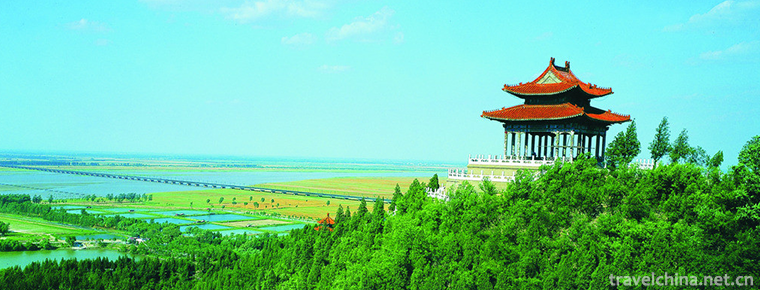
-
Longtan Park
Longtan Park is located opposite Longtan Beili District, Dongcheng District, Beijing (Chongwen District), and is currently a national 4A-level tourist park. Longtan Park .
Views: 126 Time 2019-02-06 -
angye Temple
Sangye Temple, also known as Cunxiang Temple and Wubian Temple, is located in Sangye Town, Zaburg County, Shannan District, Tibet Autonomous Region, under the Habu Mountains on the North Bank of the Y.
Views: 173 Time 2019-02-07 -
Purple Peng mountain
Zipeng Mountain, also known as Liling Mountain and North Jiuhua Mountain, is located in the south of Zipeng Town, Hefei City, Anhui Province. It is about 18 kilometers away from Hefei City. Since the .
Views: 175 Time 2019-03-21 -
Bay Leaf Jing Making Skills
In June 2008, the technique of making bay leaf Scriptures was listed in the national intangible cultural heritage protection list. The Beiye Sutra (Dai for "lazy") refers to the Buddhist.
Views: 133 Time 2019-04-04 -
Han Embroidery
Han embroidery, one of the traditional embroidery techniques with Chinese characteristics, is based on Chu embroidery, which combines the merits of various .
Views: 172 Time 2019-05-02 -
Nanxi chant
Nanxi chant is popular in Qianjiang District of Chongqing City. Its origin can be traced back to Tang Dynasty. Its embryonic form is Tujia peasants'work chant and folk song chant, which are similar to.
Views: 115 Time 2019-06-07 -
suzhou pingtan
Suzhou Pingtan is the general name of Suzhou Pingtan and Suzhou Pingtan Ci. It is a traditional form of opera and opera that uses Wu dialect to speak and perform freely. It came into being and became .
Views: 72 Time 2019-06-17 -
Jumping Cao Gai
Caogai jumping is prevalent in Baima Tibetan area of Pingwu and Nanping counties. It is held on the sixth day of the first month of the lunar calendar every year. Cao Gai is a Baima Tibetan phonetic t.
Views: 101 Time 2019-06-21 -
Wang Guo Festival
Wangguo Festival is a festival for Tibetan farmers to celebrate a bumper harvest. It is popular in Lhasa, Shigaze, Shannan and other places in Tibet Autonomous Region. The time is between July and Aug.
Views: 131 Time 2019-06-26 -
Wu Anpings tune
Wu'anping DiaoLaozi originated in the late Ming and early Qing Dynasty. Wu'anping DiaoLaozi and Wu'anluozi are two unique local operas in Wu'an City, Hebei Province. They are often performed together..
Views: 297 Time 2019-06-30 -
Nightlight Cup Carving
The manufacture of luminous cup needs 28 complicated processes. First of all, we need to select the material, then make the blank according to a certain size to form the preliminary noctilucent cup. F.
Views: 120 Time 2019-07-11 -
Panzhihua College
Panzhihua College is the only comprehensive undergraduate college in southwest Sichuan and northwest Yunnan, where the Ministry of Education locates. The school is located in Panzhihua City, a famous .
Views: 257 Time 2019-08-31
